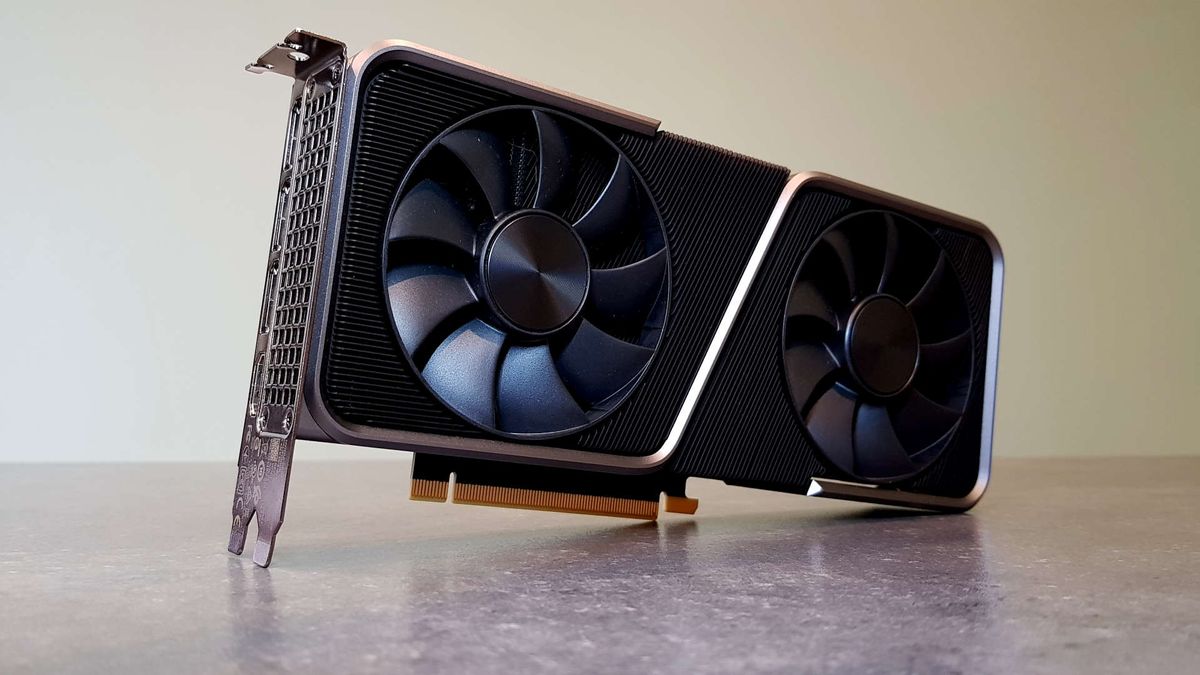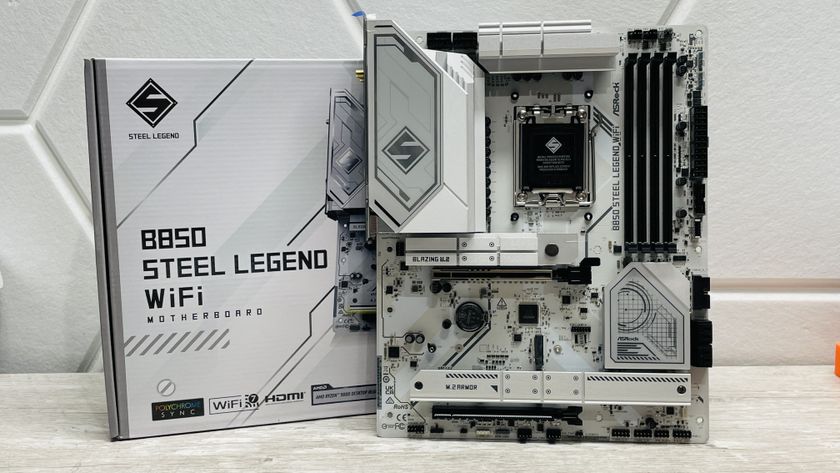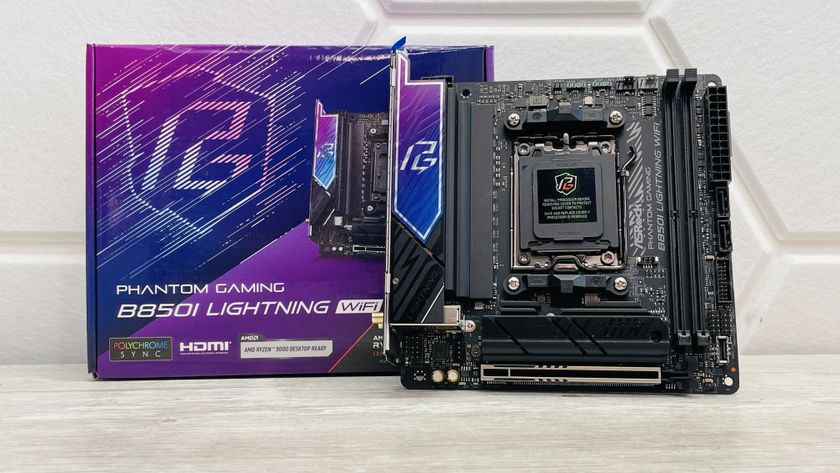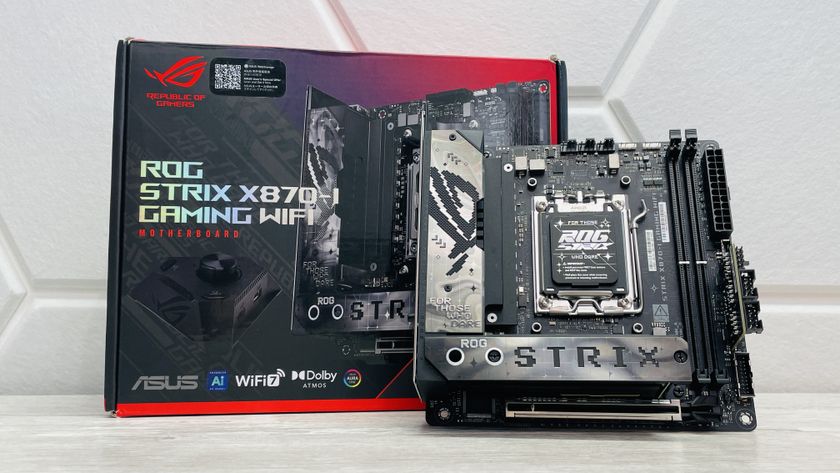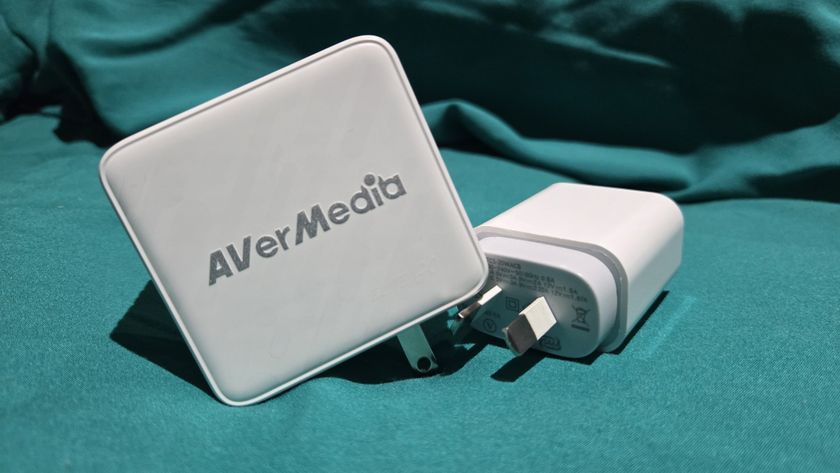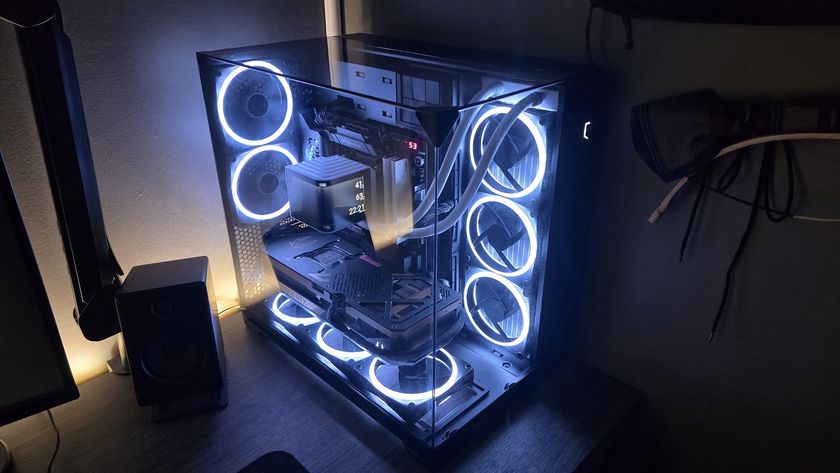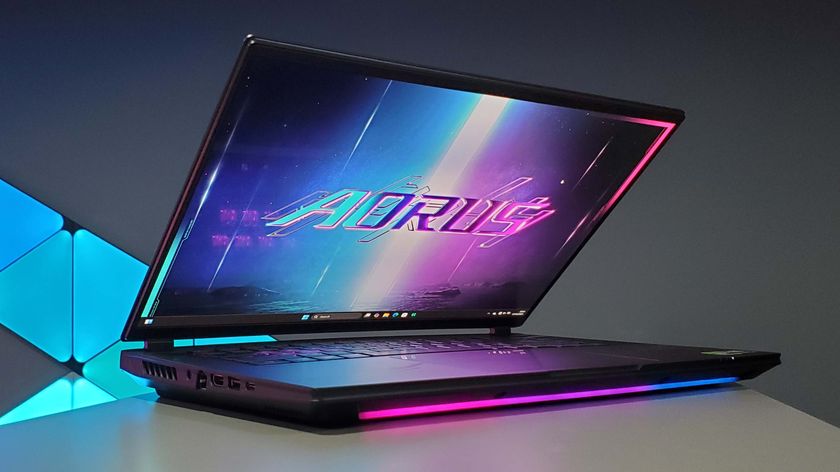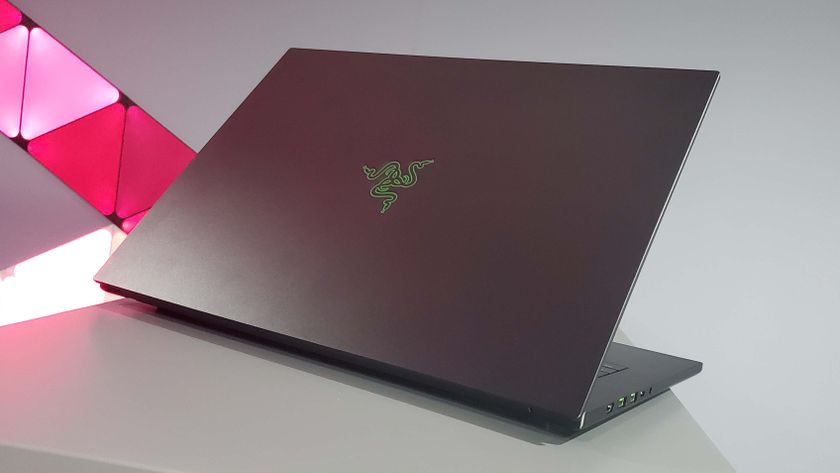Our Verdict
This diminutive third-tier Ampere GPU delivers gaming performance that would have topped the Turing generation, and does it while running cooler, with less power, and in a much smaller footprint.
For
- Turing-topping frame rates
- Relatively low power
- This FE card is smol
Against
- A few AMD known unknowns
PC Gamer's got your back
Ladies and gentlemen, welcome to today's review of the Nvidia RTX 3070 Founders Edition. This is the third iteration of Nvidia's new Ampere GPU generation, and the most affordable of the lot so far, coming in at $499 (£469). And, with gaming performance practically on par with the $1,200 RTX 2080 Ti, it's looking like a hell of a graphics card.
Today.
I always tell my writers that you can only review the hardware in front of you, not what you might want or expect it to be. But you also cannot ignore the market around it, and that's especially true of graphics cards, and especially right now.
We're at a slightly weird, almost transitional time in gaming GPUs. Though this is Nvidia's third Ampere graphics card release of the year, AMD has still yet to offer up its alternative, but is set to announce its Radeon RX 6000 series in just a matter of days. With leaked performance figures casting doubt over where this RTX 3070 might end up sitting in the next-gen GPU stack come the year's end, this review is destined to be a snapshot in time, and could read very differently in just a month.
That can only be an aside, however, because there are still so many unknowns. But what I do know right now is that the RTX 3070 is a rather beautiful, well-designed graphics card that can deliver gaming performance which was simply impossible to achieve on GPUs that cost less than a grand just a few weeks ago.
Which ought to make it a very desirable card… and you probably know where I'm going with this.
Supply and demand have been key factors in GPU discourse following the launch and subsequent utter absence of both the RTX 3080 and RTX 3090 cards, to the point where AMD is seemingly now making it a point of its next-gen marketing. Indeed Nvidia even delayed the launch of the RTX 3070 specifically to try and ensure more stock is in the channel on release to try and placate the unprecedented number of people after new graphics cards.
We still don't know what the real story is right now; Nvidia tells us that supply has been along the same lines as the GeForce 10 and 20-series cards, but we haven't been able to gather specific numbers to speak to that assertion. The notion is that demand has far outstripped what the green team expected, though it does speak to a GPU market desperate for new cards that deliver a generational performance leap which makes the previous gen chips feel oh so old.
Specifications
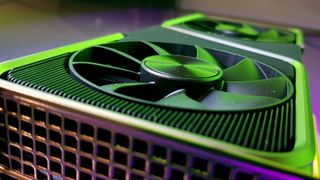
Nvidia RTX 3070 specs
The Nvidia Ampere GPU architecture is very much a known quantity now. We've covered it in-depth in our Nvidia RTX 3080 review, but once more with feeling... the green team has not only focused on boosting the ray tracing performance of its 2nd gen RT Cores, but it's also made improved rasterised gaming performance central to its new GPUs.
The GA104 silicon at the heart of the RTX 3070 comes with 5,888 CUDA cores, which looks like a hell of a lot of gaming logic, especially next to the ol' RTX 2080 Ti and its 4,352 CUDA cores. That's because Nvidia has redesigned its streaming multiprocessors (SMs) to include double the number of floating point (FP32) units as previous GeForce GPUs.
Where before there was a floating point path and an integer path, there is now a dedicated FP32 path and one that can either operate as floating point or integer, effectively doubling the FP32 resources if necessary. So it's not strictly speaking a doubling of FP32 units, as there are still gaming workloads that require integer operations, which will then limit the available floating point units, but they remain among the minority of gaming tasks.
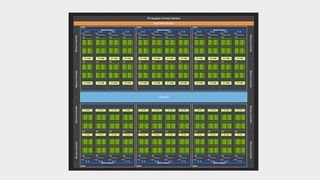
GPU - GA104
Lithography - Samsung 8nm
Die size - 392.5mm2
Transistors - 17.4 bn
CUDA cores - 5,888
SMs - 46
RT Cores - 46
Tensor Cores - 184
GPU Boost clock - 1,725MHz
Memory bus - 256-bit
Memory capacity - 8GB GDDR6
Memory speed - 14Gbps
Memory bandwidth - 448GB/s
TGP - 220W
There is also that redesigned RT Core, which is able to do more in parallel, which makes for a more efficient overall ray tracing experience. And that means this xx70-level card is actually able to deliver effective 'RTX On' gaming at a lower price point than ever before.
There are 46 RT Cores inside the GA104 GPU of the RTX 3070, and that goes some way to explain why even though it can pretty much match the RTX 2080 Ti in straight rasterised benchmarks, it often struggles against the top Turing GPU in ray traced workloads with its 68 1st gen RT Cores.
Still, the fact it can get close with almost a billion fewer transistors, and in an 8nm GPU that's getting on for half the size of the TU102, shows what an impressively efficient architecture Ampere can actually be away from the monstrous silicon of the RTX 3080 and the frankly huge Nvidia RTX 3090.
The RTX 3070 also comes with less video memory than the other two Ampere GPUs already out in the wild. With 8GB of GDDR6 it's notable that Nvidia has eschewed the speedier, and likely more expensive GDDR6X VRAM variant for its more mainstream card. With AMD expected to announce a 16GB framebuffer for its enthusiast RX 6000-series GPUs there has been some talk about whether 8GB is enough for a gaming card in 2020.
Of course more memory would be lovely for that comforting, though still ephemeral hug of future-proofing, but right now 8GB will still deliver great gaming performance even up to 4K for the most part.
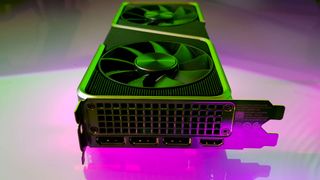
I'm not yet convinced that 8GB is really going to hold you back in gaming terms today. There are points where the RTX 3070 loses ground against the RTX 2080 Ti, but it's not really in the games which truly benefit from extra video memory.
In terms of the actual GPU clock speed itself, the Founders Edition of the RTX 3070 comes in with a rated boost clock of 1,725MHz, but those numbers are almost always irrelevant given that you'll rarely see this card dipping so low. During an extended 4K run of Metro Exodus we saw an average clock speed of 1,862MHz. We're back to old school Founders Edition cards right now, so there's no factory overclock applied here—this is pure reference clocks and no more.
I was surprised to see the RTX 3070 Founders Edition still sporting the 12-pin power connector, and therefore it comes with a single 8-pin to 12-pin adapter in the packaging. Nvidia has once more delivered a super-compact PCB with this FE card, which makes the whole shroud far smaller than the RTX 3080.
Despite coming with two front-loaded fans the spinner at the tail of the card is there to amplify the airflow across the heatpipes and that does seem to aid the cooling performance of this smart little GPU.
Benchmarks and Performance
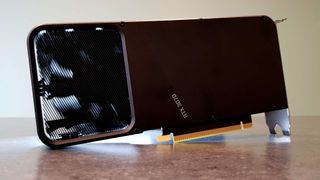
Nvidia RTX 3070 performance
I mean, yeah, we've kinda already spoiled the basics—though, to be fair, so did Nvidia at the initial Ampere GPU announcement—but the RTX 3070 essentially delivers gaming performance at the same level as the RTX 2080 Ti. It's not quite so cut and dried as that; there are instances where the factory overclocked Founders Edition of the top Turing GPU still has the edge, and times where the RTX 3070 actually pulls ahead, but it's always close.
Where it is cut and dried, however, is how the new card stacks up against the Founders Edition of the RTX 2080 Super. Again, that's a factory overclocked GPU which cost far more than the RTX 3070 does at launch, but is consistently well off the pace against the third-tier Ampere GPU, to the tune of around 16% across the board.
When you're talking about generation-on-generation performance that's a hell of an upgrade. Traditionally you'd hope a new generation of cards would at least bring you gaming performance at the same level as the tier above from the previous, but here we're talking about matching the best of Turing, and topping a card that's ostensibly two or three tiers above the previous xx70-level GPU... depending on how you count the Super variants.
1440p gaming performance









You'll maybe notice we've omitted the 1080p benchmarks this time around; we're moving on even if the vast majority of the gaming world is still sitting at 1080p. Nvidia is pitching the RTX 3070 primarily as a 1440p GPU, and at that level it's a seriously capable card, often delivering average frame rates into three figures. And at that point you can use your imagination as to how good a 1080p gaming card this becomes.
Where the RTX 3070 is ahead of the RTX 2080 Ti it's only ever by a fine margin and the same goes for the times where the benchmark numbers favour the older card instead. Initially I thought that might be down to those being the games which would benefit from larger pools of video memory.
If that were true then the same would play out with the RTX 3080 and Nvidia RTX 3090, but I found no correlation between titles that gave the win to Turing over the RTX 3070 and those where there was a sizeable lead for the heavily framebuffered RTX 3090.
In case you missed it, the RTX 3090 has a lot more video memory than the RTX 3080, and a whole bunch more CUDA cores too, but not a lot more gaming performance despite that.
4K gaming performance










Nvidia has been at pains to say this isn't really being thought of by Jen-Hsun and Co. as a 4K gaming card, likely because of the push back that might be coming its way after the 16GB AMD RX 6800 XT drops. But that being said, it's still an impressive performer on that score. Which I guess should be pretty obvious considering the RTX 2080 Ti was the go-to 4K card of its generation.
Neither card can always nail 60fps at max 4K game settings, however, so you will have to be a little more measured with your desire for ultra presets at all cost. And at that point you will also be likely lessening the need for a huge pool of VRAM as the settings drop, so that becomes less of an issue too. If it ever really was.
Ray tracing performance







The comparative ray tracing performance of the RTX 3070 and RTX 2080 Ti does put the new card behind almost across the board. Given that it is sporting significantly fewer RT Cores, 2nd gen though they are, it's still impressive that it is still not by much. Against the RTX 2080 Super, however, it is very much in the ascendance. At 1440p you're talking about making a pretty sizeable performance jump over the older, still more expensive GPU, a jump that would absolutely be noticeable in-game.
We're not talking about the RTX 3070 necessarily making the performance penalty of turning RTX On something we can ostensibly forget about, as was practically the case with the super-powered RTX 3080, but it's still more shinies than any card at this level can offer. And that will still likely ring true once AMD's finest are revealed too.
Thermal and power performance



CPU - Intel Core i7 10700K
Motherboard - MSI MPG Z490 Gaming Carbon WiFi
RAM - Corsair Vengeance RGB Pro @ 3,200MHz
CPU cooler - Corsair H100i RGB Pro XT
PSU - NZXT 850W
Chassis - DimasTech Mini V2
Monitor - Philips Momentum 558M1RY
With the frame rate numbers hovering around the RTX 2080 Ti level the efficiency of the Ampere GPU comes to the fore. It's consistently drawing less power than the top Turing chip, with an average tested Wattage of just 222W, and a peak of 262W. That's a peak GPU power draw below the average demands of the RTX 2080 Ti.
It also runs cooler too. Not by a huge amount, but it's still significant as the GPU is clocked far higher. Given that it's a comparatively tiny PCB, with all that hot silicon jammed into a small space, that's impressive, and shows how effective the Founders Edition cooling is. We expect third-party chip chillers will pull those temperature figures down even further, but they will come on a far larger scale.
That should mean we have some overclocking potential lurking in this mainstream GPU… but sadly that ain't so.
We squeezed a small amount of largely unstable MHz out of the GA104 silicon, but it made no positive difference to the gaming performance of the card. Speaking with Nvidia it doesn't sound like there's going to be much in the way of headroom for any of the Ampere GPUs.
It's suggested that's because Nvidia's gotten better at consistently squeezing all the performance it can out of a chip in the factory, rather than being beholden to the silicon lottery, but potentially it's because Nvidia is feeling more pressure to run its chips as fast as possible with the red team breathing down its neck.
Verdict
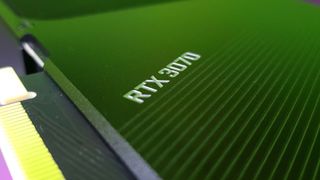
Nvidia RTX 3070 verdict
After the RTX 3080 and RTX 3090, the Nvidia RTX 3070 feels like a rather dainty little graphics card, but one with a whole lot of gaming performance sitting beneath that unassuming black and brushed aluminium shroud.
Where we were blown away by the performance of the flagship Ampere GPU utterly trouncing the RTX 2080 Ti, it's almost more impressive seeing this third-tier card matching the top Turing chip for way under half the price.
Sure, at $499 (£469) it's not exactly a cheap graphics card, but the RTX 3070 is bringing ultra-enthusiast gaming performance down into a far more palatable price point. And it's also making high-end ray tracing and 4K gaming relevant to a much wider sector of the audience too.
This is a card which should shift a whole load of stock, and could end up as the darling of the small form factor brigade because of its power, cooling, and diminutive stature.



But that's liable to be both a blessing and a curse for Nvidia. Where a successful launch should mean you sell out, when that happens this time around the green team will be castigated for not creating and supplying enough to keep everyone happy, however much it was hoping to pack the shelves with a delayed launch date.
Though whether enough doubt is seeded by AMD and its RX 6000-series cards to have prospective GPU buyers holding fire on picking up a new Nvidia toy I don't know. I would expect the Big Navi announcement not to have a huge impact on demand, after all there is a whole ecosystem around Nvidia's cards that offer a huge amount on top of the raw gaming frame rates.
There's the historically reliable driver stack, the GeForce Experience app, ShadowPlay's recording and the new Broadcast suite, the impressive Reflex latency-spiking setup, and the latent potential of RTX IO bringing the next-gen consoles' most potent feature to the PC. And of course you have ray tracing and the ever-improving DLSS enhancements.
That's a lot to add onto the raw hardware, and it does make a difference to a lot of people.
Nvidia's xx70 series of cards is often the real sweet spot for PC gamers, and the RTX 3070 is ever that. This is the Ampere card which represents a genuine performance upgrade for the vast majority of us, at a price that we can almost swallow. For all those people who sat on their GTX 1080 and GTX 1080 Ti cards throughout the RTX 20-series, now really is the time to upgrade.
This diminutive third-tier Ampere GPU delivers gaming performance that would have topped the Turing generation, and does it while running cooler, with less power, and in a much smaller footprint.

Dave has been gaming since the days of Zaxxon and Lady Bug on the Colecovision, and code books for the Commodore Vic 20 (Death Race 2000!). He built his first gaming PC at the tender age of 16, and finally finished bug-fixing the Cyrix-based system around a year later. When he dropped it out of the window. He first started writing for Official PlayStation Magazine and Xbox World many decades ago, then moved onto PC Format full-time, then PC Gamer, TechRadar, and T3 among others. Now he's back, writing about the nightmarish graphics card market, CPUs with more cores than sense, gaming laptops hotter than the sun, and SSDs more capacious than a Cybertruck.

It's better than Slay The Spire, it was our best card game of 2020, and now the sequel has a proper release date
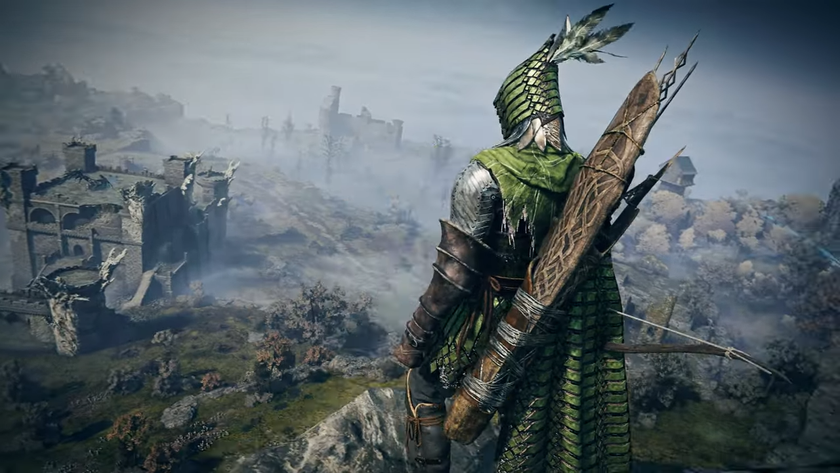
Elden Ring Nightreign gets a new trailer showing that, finally, you get to be the nightmare archer of Anor Londo
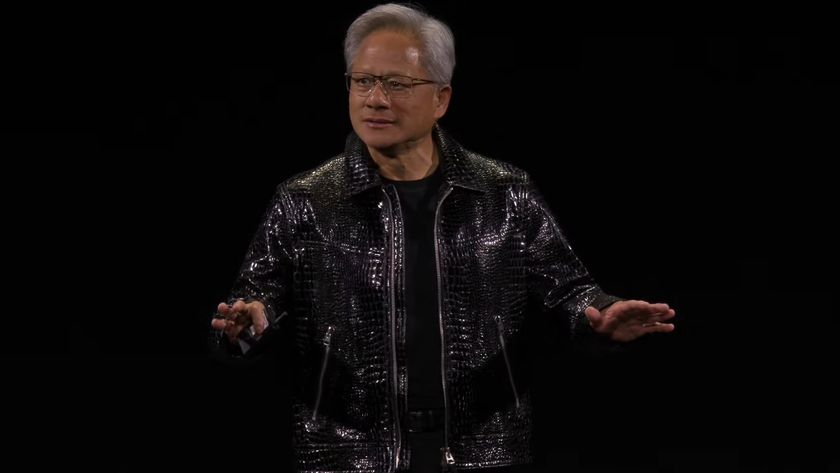
Companies are selling cheap faux leather 'Jensen Huang' jackets and some of the listings are hilarious
